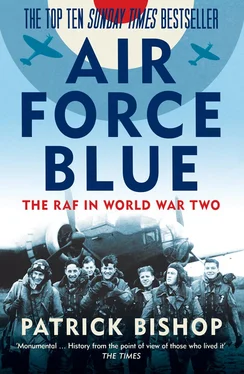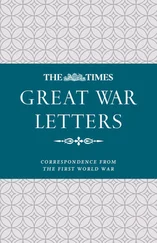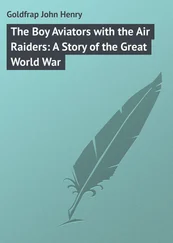The Dam Busters were led by Squadron Leader John Brookes, who was also in overall charge of the operation. The honour should have gone to their CO, Wing Commander Johnny Fauquier but he had been told by his superiors that he had exceeded his permitted number of operations and would not be on the trip. The blunt-spoken Canadian did not bother to hide his annoyance when he spoke to Brookes at the briefing. ‘I’d like to have this target in my log book,’ he told him. ‘In fact I would like to have this target tattooed on my arse, but you have got to lead it.’10
The route took the bombers southwards towards Paris. There they turned again, south and east cruising at a steady 145 knots and ninety minutes later saw the snow glowing pink as the sun broke over the ramparts of the Swiss Alps.
At points along the way they were joined by more than two hundred Mustangs from RAF Fighter Command and the US Eighth Air Force. For most of the war the bombers had gone forth alone with only their on-board guns to protect them from flak and fighters. Now long-range escorts shepherded Allied bombers to and from their raids. Today there scarcely seemed a need for them.
H-Hour had been set for 9 a.m. As the bombers droned closer, the people of Berchtesgaden blithely went about their morning routines. Hitler’s presence had seemed like a blessing at first, bringing attention and excitement to the valley. The modest villa he had first rented in 1928 had been transformed over the years into something more suited to a man of destiny. The result was what one architectural historian described as ‘a combination of faux rusticity and imposing grandeur akin to a Thurn und Taxis princess decked out in a haute-couture dirndl’.11
At the heart of the house was the Great Hall. It was the size of a hangar, furnished with elephantine armchairs and hung with tapestries and paintings by Italian masters. Set into the northern wall was a picture window, thirty yards square, which, thanks to an ingenious mechanism, wound down into a recess in the floor. It was, enthused Diana Mosley, wife of the Blackshirts’ leader Oswald Mosley, ‘the largest piece of glass ever made … through it one sees this huge chain of mountains and it looks more like an enormous cinema screen than like reality …’12

Adolf Hitler, Obersalzberg ( Photo by ullstein bild/ullsteinbild via Getty Images )
As well as being the closest thing that Hitler had to a home, the Berghof made useful propaganda. It was a backdrop against which he could demonstrate his more human side. He was pictured in trilby, loden jacket and flannels, feeding deer and smiling at flaxen-haired little girls. It was a place for relaxation where he breathed the mountain air and stood at the enormous window looking out at the Untersberg, where legend had it that the twelfth-century Holy Roman Emperor Frederick Barbarossa lay sleeping, awaiting the hour when he would rise again and build a German empire that would last for a thousand years.
It was also a place of business, an ideal setting in which to impress or intimidate the politicians who trooped there in the countdown to the war. Stamped in the memories of the older airmen were images of an infamous visit that had taken place six and a half years earlier. On the morning of 15 September 1938 the Prime Minister Neville Chamberlain arrived at Berchtesgaden to try and avert another European conflagration. Hitler was demanding that Czechoslovakia allow the ethnic Germans of the Sudetenland to unite with the fatherland or face invasion. By the end of the meeting, Chamberlain was persuaded it was worth sacrificing Czechoslovakia for the sake of a shameful peace. Twelve months later the Second World War began.
Allied bombers had since wrecked every major German city killing hundreds of thousands. Berchtesgaden had been left alone and was barely touched by the war. The local economy boomed, supplying the Nazi colony which expanded as the elite moved their families and wealth out of bomb-blasted Berlin. Hitler was a frequent visitor. Between 1939 and 1944 he spent more time at the Berghof than he did in the capital, but nine months ago he had left and not been seen again.
That Wednesday morning there was one very senior Nazi in residence, however. Hermann Goering had turned up at his villa to join his family a few days before. He left Berlin on 20 April, Hitler’s birthday, and had tried to persuade the Führer to go with him to Berchtesgaden. The overture had been rejected contemptuously. As he drove out of the city and Allied air raids began, Goering and his entourage ducked into a public shelter. ‘May I introduce myself,’ he declared as the bombs rained down. ‘My name is Meyer.’ It was a bitter joke. Years before he had promised that if British bombers ever struck Germany ‘you may call me Meyer’ – a very common German, and also Jewish, name. Astonishingly, the huddled crowd burst into laughter.13
His flight brought him no nearer to safety. On arrival at the villa, Goering had made an ill-judged attempt to take over leadership of the Reich, in accordance with an agreement struck with Hitler in June 1941 that he should assume the powers of the Führer should he be captured or incapacitated. The move was interpreted as an act of treachery, and that morning two senior SS officers had showed up, pistols in hand, to arrest him.
The drama was interrupted when, up and down the valley, the air raid sirens sounded. Despite interference from the mountains on the Pathfinders’ ‘Gee’ electronic navigation systems, the lead aircraft arrived almost exactly on time, just before 9 a.m. Squadron Leader Brookes of 617 squadron was to bomb first. His target was the Eagle’s Nest. It was extremely hard to spot from the bombing height of 15–16,000 feet. Neither Brookes nor his bomb aimer were able to identify anything that was worth wasting a Tallboy on. Three of the following aircraft did drop their bombs, but none scored a direct hit.
Then it was 9 Squadron’s turn. As they approached the Berghof, the flak batteries set into the valley sides were banging away, pumping up streams of accurate flak at the bombers coming in at between 14,000 and 15,000 feet. Flight Lieutenant G. J. Campbell broadcast later on the BBC that he saw a ridge flash below him as his pilot Flying Officer J. Buckley brought him ‘almost dead ahead of the house. I had a perfect run up and released my twelve-thousand pound bomb with the house dead in the sight.’14
Campbell’s Tallboy was fuzed at twenty-five seconds.15 From a Lancaster following close behind, rear gunner Flight Sergeant E. J. Cutting watched ‘a twelve thousand pounder land about a hundred yards from Hitler’s house’.16 There was ‘a terrific flash and though we were flying pretty high we could hear the explosion above the roar of our engines and the whole plane seemed to rock,’ he told radio listeners. Then ‘great piles of earth came shooting up, high into the sky. I thought to myself well, even if that’s a bit short, it must have damaged the place. But just at that moment there was another flash, followed by a huge explosion. One of the other aircraft had planted its twelve thousand pounder bang on the target.’
By now the Main Force squadrons had arrived and the sky over the valley was dangerously crowded with huge aeroplanes. Cutting’s pilot reported at the post-operation debrief that ‘interference from other aircraft was so great’ that he was unable to identify the target on the run-in and was ordered by the master bomber controlling the operation from another Lancaster not to bother making a second effort. Another pilot, Squadron Leader James Melrose, stated that ‘just as the bomb aimer was preparing to drop the bomb, the aircraft was narrowly missed by a bomb from [an] aircraft above, and the target was accordingly overshot and it was impossible to bomb’.17 Fred Whitfield’s main concern was the anti-aircraft fire. The gunners had found their range and ‘the sky was black with flak’.18 The bomb aimer, Phil Jackson, seemed unaware of the shells rocking their kite as he talked Ron Adams in. Then Q-Queenie ‘appeared to leap a thousand feet in grateful thanks for being relieved of five tons of metal’. Relief was brief. A few seconds later he heard a ‘huge bang … we went into a steep dive. The port engine was on fire.’ Then came ‘another almighty bang’ apparently caused by one of the giant bombs hitting the top of the mountain. This blast hurled Q-Queenie upwards, blowing out the flames licking around the engine in the process. Swinging his turret to port Whitfield looked back up the inside of the aircraft for damage and saw jagged holes in the fuselage but the Lancaster flew on unperturbed. As they turned away he had a grandstand view of the Main Force attack.
Читать дальше













